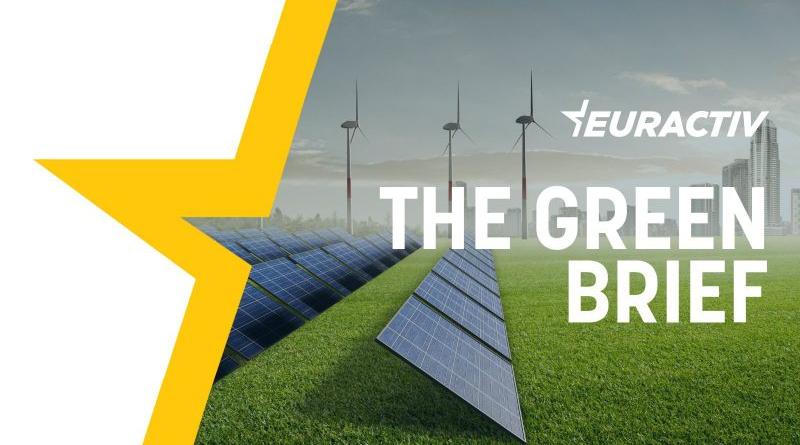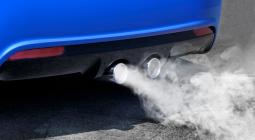A green regulatory winter is coming – and this may be a good sign

Welcome to EURACTIV’s Green Brief, our weekly selection of energy and environment news from across Europe. To subscribe, follow this link. You can also subscribe to our daily newsletter here and to our comprehensive weekly update here.
French President Emmanuel Macron unleashed a storm of comments last week when he called for “a European regulatory pause” on environmental rules.
Yet, as the European Union reaches the end of a five-year political cycle focused on the adoption of new legislation under its European Green Deal agenda, it is only common sense that the next phase should focus on implementation and delivery.
Over the past four years, Europe has passed more environmental regulations than any other country or region in the world, the French president remarked, citing the EU’s 2030 and 2050 climate targets aimed at cutting greenhouse gas emissions to net-zero by mid-century.
“We are ahead, in regulatory terms, of the Americans, the Chinese or any other power in the world,” Macron said. “Now, we have to implement,” he added, saying European businesses “need stability” to plan for the years ahead.
French opposition lawmakers and the radical left reacted furiously to Macron’s speech, saying the president was essentially “putting the final nail in the coffin of the Green Deal”.
Key environmental laws such as the upcoming revision of the REACH regulation on chemical safety or the EU’s proposed nature restoration law “are now in danger”, said Marie Toussaint, a French Green lawmaker in the European Parliament.
While environmentalists are justifiably concerned about the future of REACH or the EU’s nature restoration law – which are both coming under attack by EU governments and conservative lawmakers – they are, however, missing the broader point about long-term trends in European policymaking.
During its five-year mandate, the current European Commission led by Ursula von der Leyen tabled 46 legislative proposals under its Green Deal agenda.
Of these, 29 have already been successfully concluded, including the EU’s landmark Climate Law, which enshrined the bloc’s objective of reducing emissions to net zero by 2050 and cutting them by 55% before the end of this decade.
Other flagship pieces of legislation were agreed more recently, setting new ambitious targets on renewables and energy efficiency for 2030 or mandating new passenger cars to be zero-emission as of 2035.
Of course, meeting these objectives will not be a walk in the park.
Carmakers, for instance, have just over ten years to switch their entire production to 100% clean vehicles. And the energy sector will have to double its renewable output in less than seven years – from 22% today to 42.5% of the bloc’s energy mix by 2030.
Clearly, it is now time for Europeans to roll up their sleeves and make sure those decisions are translated from paper to reality.
This is where Macron’s speech is worth a second look. In essence, the French president said Europe should now focus on putting in place the financing mechanisms necessary to support the green transition rather than keep adding to the EU’s green legislative rulebook.
“Let us be clear: We cannot achieve technological sovereignty, the transition for the climate and biodiversity – for our industrialists and to support households – if we do not invest massively at the European level,” Macron said.
“This is where the priority should be,” he added, saying: “I will support the Sovereignty Fund proposed by the Commission in the months to come.”
In stressing the importance of financing, Macron also put the finger on a structural weakness of the European Union. While Europe is at the forefront when it comes to policymaking, it lacks the financial firepower of the United States when it comes to supporting the green transition.
To be sure, Macron’s comments have already found an echo among the EU’s conservatives. Supporters of a break on environmental legislation include EU employers’ group BusinessEurope and right-wing lawmakers in the European Parliament, who are pushing for a “regulatory moratorium” on green laws.
But green advocates shouldn’t worry too much. As the EU finalises the adoption of its European Green Deal package of legislation, the spotlight will soon turn to EU countries to deliver and implement it.
At the national level, this will translate into a myriad of new rules and regulations, which will need to be reflected in the National Energy and Climate Plans (NECPs) that EU countries are required to submit to the European Commission on a yearly basis.
So while a regulatory winter might settle down on Brussels, a new spring will start blooming elsewhere as the EU aims to reach its 2030 environmental objectives.
Meanwhile, at the EU level, dozens more implementing rules will need to be adopted after all legislation is passed under the Green Deal.
The battery regulation alone, for instance, foresees the adoption of 32 implementing acts to set technical standards on everything from battery production to recycling.
In total, more than 100 pieces of secondary legislation are expected to be delivered in the coming years under the Green Deal, the European Commission told EURACTIV.
After the legislative fireworks of the current Commission, this may sound less exhilarating than the current policy cycle, which set key environmental objectives for Europe in the decades ahead.
However, this implementation phase will be no less crucial to the success – or failure – of the European Green Deal.
– Frédéric Simon
cover photo:Subscribe to EURACTIV's Green Brief, where you’ll find the latest roundup of news covering energy & environment from across Europe.





